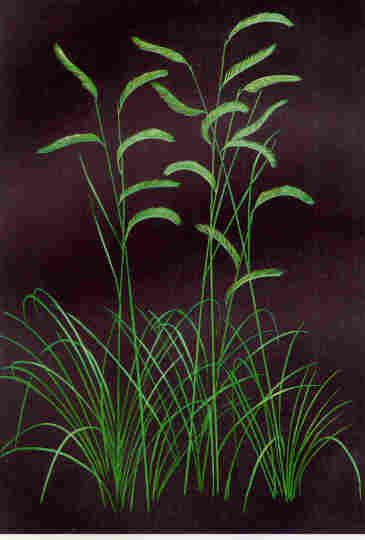

Blue
Grama
Bouteloúa
grácilis
 |
|
Blue grama is a native perennial, warm-season, short grass with narrow leaves 3 to 6 inches long that form a curly mass of bunchy sod. Seed stalks vary from 10 to 20 inches high. It is often mistaken for buffalo-grass and hairy grama. Blue grama grows erect in definite bunches and reproduces only by seed. As the seed heads mature, they usually bend into a curve resembling a human eyebrow. This short grass is the most important grama and is found growing throughout the Great Plains. It will stand extreme drought, reviving and making rapid growth when favorable conditions return. Like buffalo-grass, its weak point is its low forage productivity. Blue grama is nutritious, palatable, and eaten by all classes of livestock. It cures out in the fall and retains most of its nutritive value for winter grazing. Blue grama is an increaser on most tall and mid-grass ranges where the taller grasses are abused by over-grazing. Blue grama is more vigorous and productive when not grazed closer than 2 to 3 inches during the growing season. This short grass can be harvested with a combine and established readily from seed. Excellent stands have been obtained by broadcast or solid-drill seedings. The usual seeding rate is 8 to 12 pounds of clean seed to the acre. Because of its wide adaptation (all soil types, including alkaline soils), ease of establishment, and economic value, blue grama is used extensively for conservation purposes. Although its erosion-control properties are effective when this short grass is seeded in pure stands, the general practice is to make plantings with mixture of other adapted grasses. Most revegetation seedings have been made on native range land and abandoned cropland. Portions copyright "Pasture and Range Plants", Phillips Petroleum Company, 1963 |